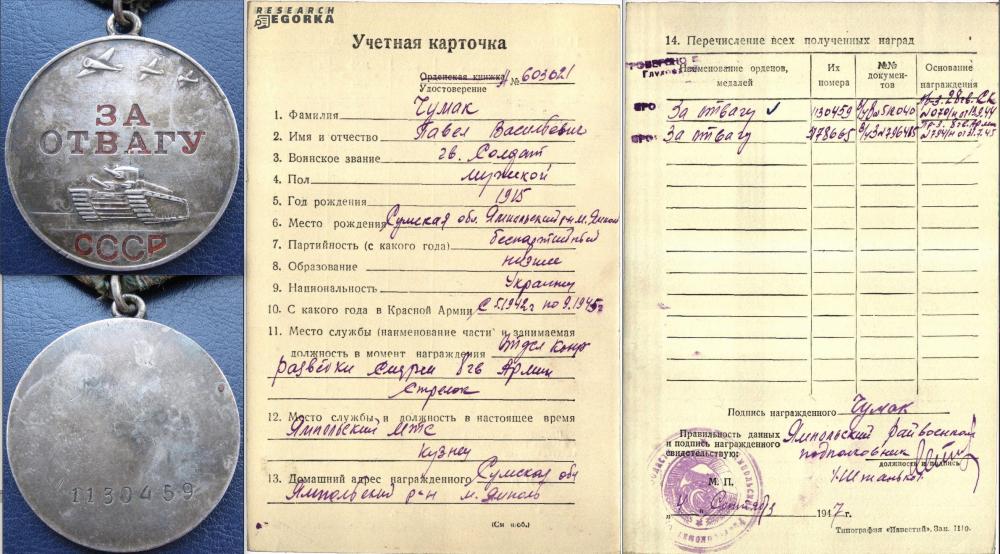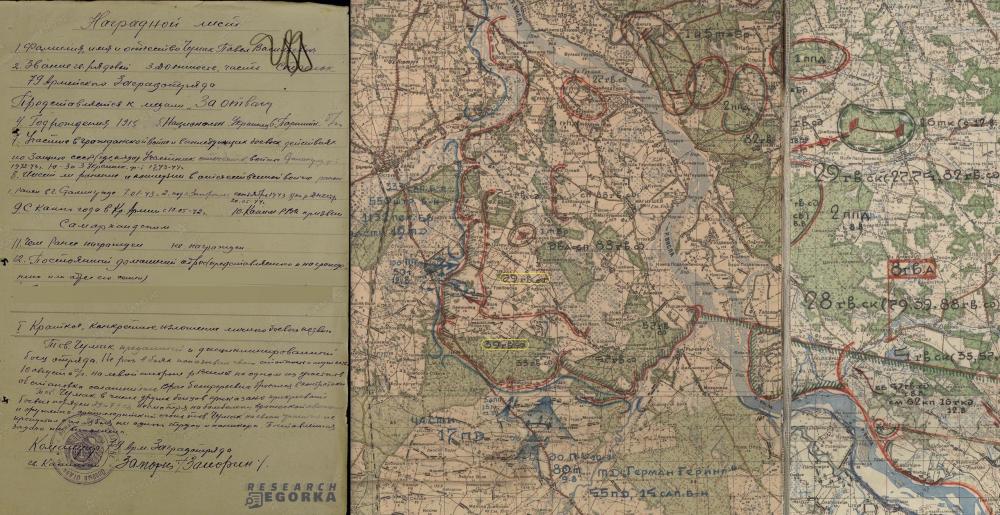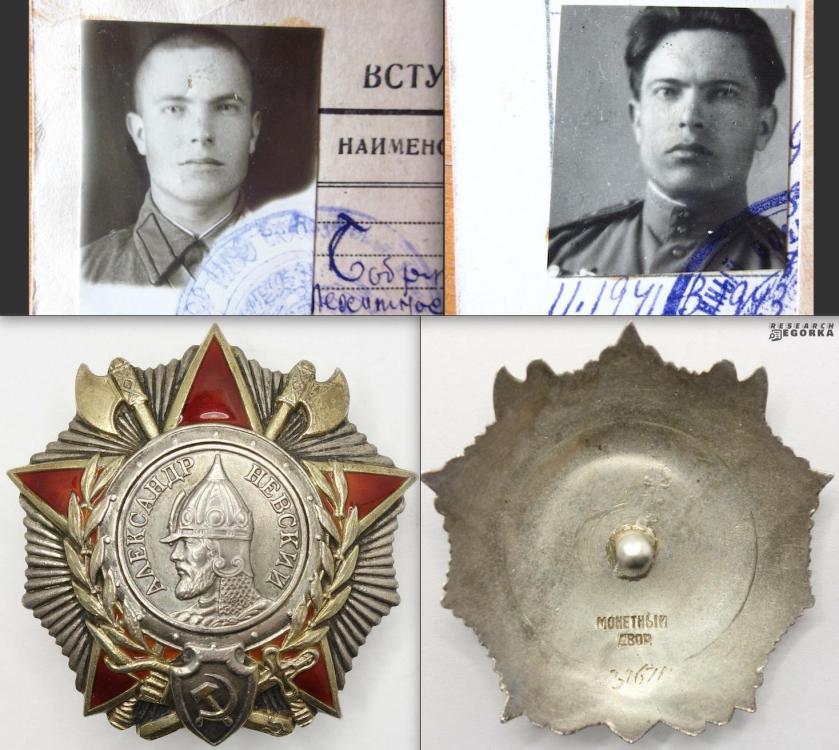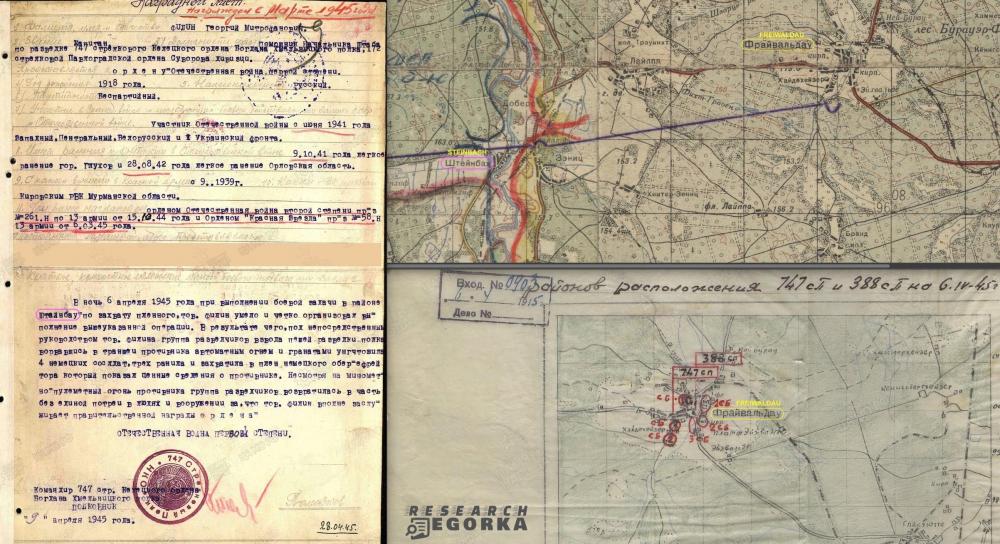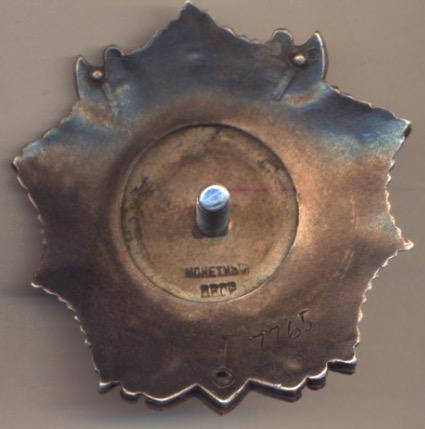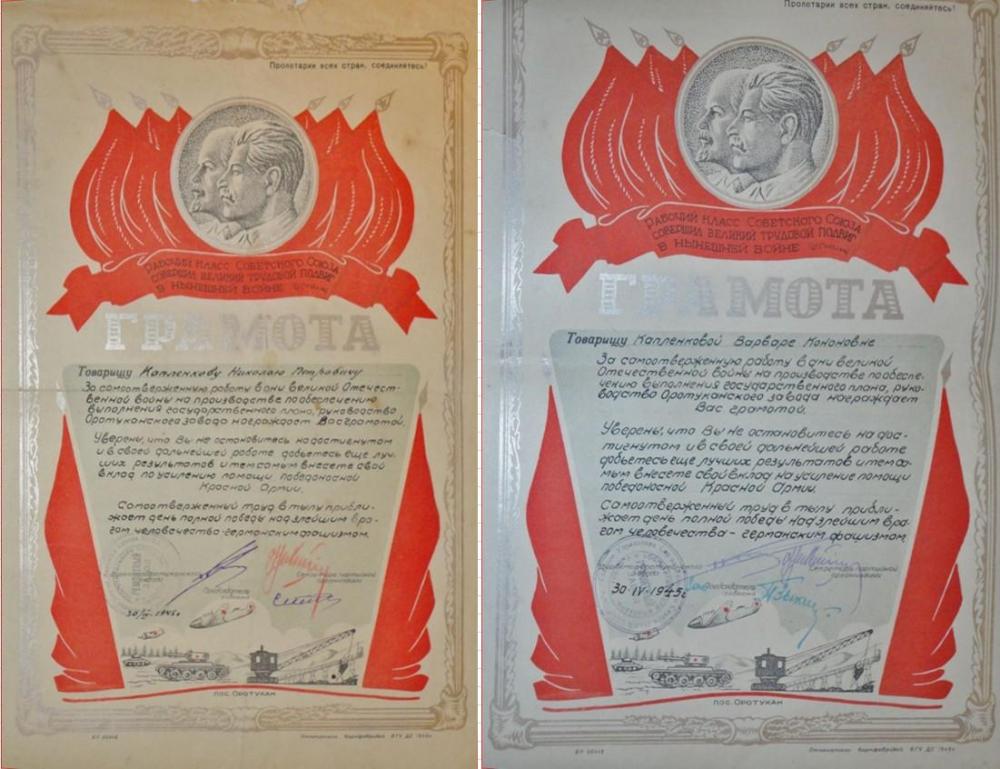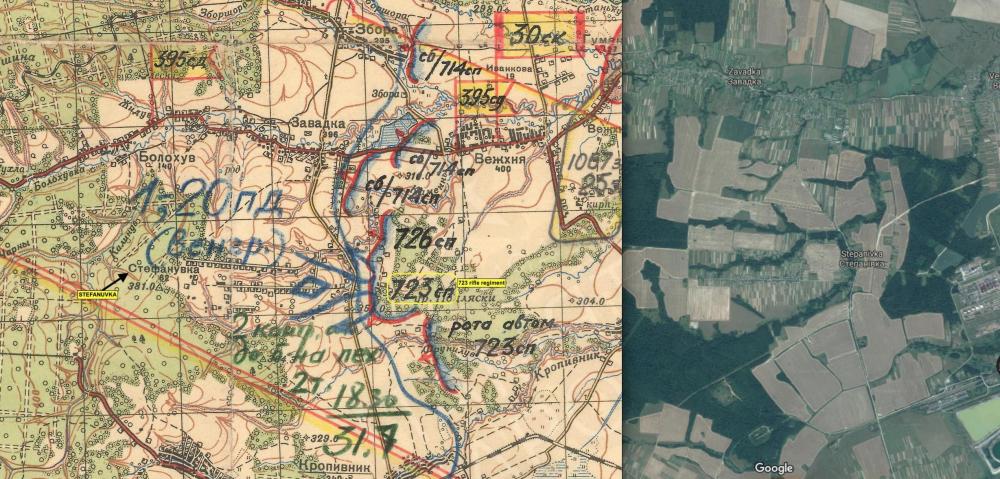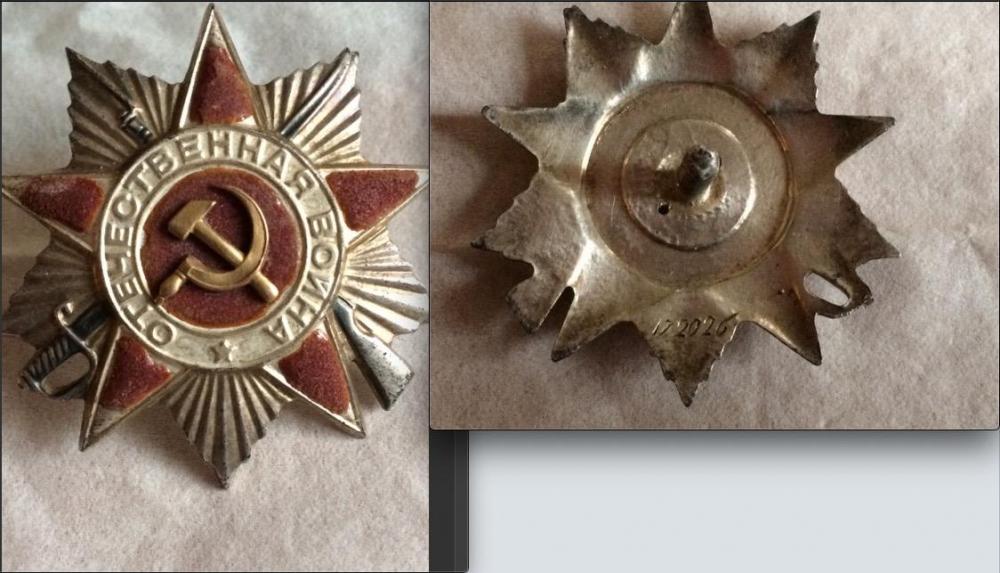-
Posts
533 -
Joined
-
Last visited
Content Type
Profiles
Forums
Blogs
Gallery
Events
Store
Everything posted by Egorka
-
Hello Paul! I just got a Bravery medal for a man from 79 blocking detachment (Magnuszew bridgehead). But his SECOND Bravery medal from July 1945 is "for removal of AK officers and their weapons". He is information on his FIRST medal, which I have.
-
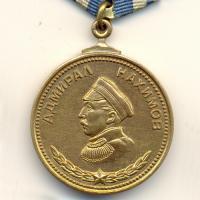
2nd Lieut W.G. Butteriss, MC, MM
Egorka replied to cazack's topic in Great Britain: Orders, Gallantry, Campaign Medals
Very interesting! Nice citation. Thank you for sharing!!! -
OAN 37671 to captain FILIN, head of Intelligence of the 747 rifle regiment. Thank you Matthijs Jansen for the great badge! Captain FILIN Georgy Mitrofanovich, 1918-1962. Chief of Staff assistant for Intelligence of 747 Guards rifle regiment (172 rifle division, 13 army, 1 Ukrainian Front). Awarded OAN in May 1945 for the operation to capture a prisoner, held 06 April 1945 in near the town of Steinbach. Before that, the veteran had a rich combat life: he was in a pocket several times and was a partisan. Then back to the front scout. A native of the village of Krugloye, Dmitrovsky District, Oryol Region. This which played a role in his subsequent partisan engagement. In May 1941 he graduated from Bobruisk infantry school. Since 10 June 1941, a rifle platoon commander of 800rifle regiment, 143 rifle division. From June 11, 143RD was be transferred to the Baranavichy area, where on June 27, 1941, it came under a massive blow of the German troops and began to retreat to the east. By the time the division was disorganized and unfit for action. By June 30, 1941, the division was surrounded and acted in the forests, and on 2-3 July 1941, it started to exit towards Berezina river, and by 05 July 1941, the remnants of the division were concentrated in the Dobrush area, having virtually no armament left. On 26 August 1941 defended town Novgorod-Seversky. During September 1941, leads heavy oncoming fighting in the area of Shatrishche (Sumy region). On 30 September 1941, the enemy troops launched "Typhoon" offensive, and the division was encircled in the Meredino-Budsky area, as were all the troops in the same army army. On the night of 09 October 1941, the division, making up the shock group of the army, went on a breakthrough, attacking settlement Negino and by the evening of the same day went into the forest North-West of Sevsk. On 28 November 1941, after stubborn fighting, the division left the village of Preobrazheniye (south-west of Izmalkovo on the Bolshaya Chernava River) and moved south of Izmalkovo, where it tried to organize defense on the Yasenok and Chernok rivers near the village of Koshkino and the village of Chernok. On 29 November 1941, under pressure from the enemy, the division was forced to abandon its line and took up defenses along the Yasenok River from the Yelets-Izmalkovo railway to the Kazaki-Chernava highway. By that time, the division consisted of only 1615 (instead of 14000) men and just several machine guns. Thus, FILIN's division appeared in the native place of the veteran in November 1941, where it fought out of the encirclements. Apparently, it seems, it is here that FILIN loses his unit and after a while gets to the partisans. From November 1941 he was a platoon commander 1 of the Kursk Partisan Brigade. October 20, 1942 awarded the Order of the Red Star for his partisan work. February 25, 1943 of the Central Front under the command of K.K. Rokossovsky, participating in an operation to destroy the Oryol grouping of the enemy, launched an offensive. A number of settlements were liberated, including Sevsk. The partisans of the 1st and 2nd Kursk Brigades united with the units of the Red Army. How long FILIN in the partisan unit? The last record in his service list states: "11.1941 - 03.1943 commander of a platoon of the 1 Kursk Partisan Brigade". However, in the old record it is noted: "Was surrounded in the area Glukhovo in October 1941. In June 1942 rejoined by the Red Army". Maybe the city Glukhovo means town Glukhov, which is close to the Dmitrovsky district where the 1 Kursk Partisan Brigade operated. From May to July 1943, the deputy rifle company commander of 625 rifle regiment, 143 rifle division (his original division!). July-November 1943 - 27th separate officer regiment. From February 1944 until the end of the war - intelligence officer of 747 rifle regiment, 172 rifle division.
-

Hero of Chernobyl Medals?
Egorka replied to bigjarofwasps's topic in USSR: Soviet Orders, Medals & Decorations
These are issued by NGOs. I even believe, anyone can buy them for himself. Can be purchased here from the manufacturer: http://www.vto-orden.com.ua/ru/catalog/award/znak-narodnoyi-poshani-geroj-chornobilya3 -

A single WW2 War Medal with the box
Egorka replied to Noor's topic in Great Britain: Orders, Gallantry, Campaign Medals
Very nice! Thank you for sharing! -

Order Of The Red Star No.503637
Egorka replied to Sammy99's topic in USSR: Soviet Orders, Medals & Decorations
Hello! What do you mean with "it isn’t correctly numbered" ? Is there anything wrong with the engraving? -

Soviet Medal Order Collection UPDATE:-)
Egorka replied to brian1978's topic in USSR: Soviet Orders, Medals & Decorations
Getting better day by day... -

Soviet Awards collection over the years
Egorka replied to brian1978's topic in USSR: Soviet Orders, Medals & Decorations
Great stuff!!! -

Feat of the People website.
Egorka replied to Duncan's topic in USSR: Soviet Orders, Medals & Decorations
Please, give an example of your failed search. Maybe we can help. -

Maternity group completed
Egorka replied to Raven's topic in USSR: Soviet Orders, Medals & Decorations
You will be a good mom! Congrats! -
It would help if the scans were sharper... The recipient is a man with surname CHUGUNKOV A.I. (the way you wrote the surname whould mean that was a woman). He worked as a loader, i.e. the guy whose tasks was to move heavy loads (the word "lumberjack" is stricken out and "loader" is written on top). I believe, CHUGUNKOV was indeed an inmate or former inmate in the correctional facility. The facility was located at or near settlement Sos'va in Sverdlovsk region and was mainly lumber cutting and transportation.
-
I am glad to help! The scan of this document is not that sharp... But it looks like the recipient is a woman - CHUMKOVA T.S. Grammatical surname spelling implies that the recipient is a woman (ЧУМКОВУ Т.С.). If it was a man, this would read ЧУМКОВА Т.С. п/я УЕ-394/1З п/я - почтовый ящик - post box. This was also a notation used, when the name of organization was no used in open communication. УЕ-394/1З - this is code for the correctional facility. Today its called ФКУ ИК №13. http://www.list-org.com/company/930716/map
-
These are two exactly the same gramotas issued on the same date, 30 April 1945, to two people - man and wife. The man was mechanical engineer at Orutukan plant. The woman also worked at the plant. These two are exactly the same as yours, with exactly the same text. I believe, KUDRIAVTSEV was a colleague of this couple - a civilian engineer or a worker.
-
That is right, but it doesn’t indicate directly, that this particular man was in NKVD service. Not only GULAG inmates lived and worked in the area, hence this man could had been a so called “freely employed”. There is no rank. The paper itself was signed by the Head of labour union and the Head of the local Com. party organisation. I cannot quite clearly see the stamp, but doesn’t look like it supports NKVD theory either.
-
Hello and thank you for sharing! Why do you think the recipient was in NKVD? I don't really see any direct indication of that.
-

Order of Red Star with the Order Booklet
Egorka replied to nickstrenk's topic in USSR: Soviet Orders, Medals & Decorations
Good one, Nick! Here is one of the actions described in the citation. When rifle battalion commander Lt. IVASHKO replaced wounded company commander on 31 July 1944 in the engagement near village Stefanivka. The citation and the map describe 2 attacks by 1 and 20 Hungarian infantry divisions supported by 2 tanks, which took place at 18:30. -

Wearing other state orders, Chinese Empire officials
Egorka replied to 1812 Overture's topic in China
We can all learn from this thread!!! I have! I think, I will use the same approach too. Or is it copy-righted? In that case I will do the same out of spite. -

Wearing other state orders, Chinese Empire officials
Egorka replied to 1812 Overture's topic in China
Thank you very much for sharing! Very impressive and educational! -

Posthumous OPW2 - defaced order
Egorka replied to redoctober's topic in USSR: Soviet Orders, Medals & Decorations
Note, that the sabre handle and the rifle butt were also removed. I think someone as trying to make a generic silver star out the order. -

OPWII #172026 lost and found
Egorka replied to Egorka's topic in USSR: Soviet Orders, Medals & Decorations
Good eye! You almost gave me a heart attack. And rightfully so. The averse photo appears to be NOT of the piece I have. I reused the photo from the seller, who must have mixed them up. I will need to make averse photo of my object and post it here. -

Soviet Cool Navy Award-You read. : D
Egorka replied to Aurelius's topic in USSR: Soviet Orders, Medals & Decorations
Well... about 65Gb of data. Not much, as it's been estimated that the Internet weighs about the same as a medium-sized egg (50g). ? Example of the information in the protocol: ORB # 114821 being awarded to Petty Officer 2st Class PROKAZOV, Baltic Fleet. ( http://gmic.co.uk/topic/74228-boris-prokozov/?tab=comments#comment-673823 ) -

OPWII #172026 lost and found
Egorka replied to Egorka's topic in USSR: Soviet Orders, Medals & Decorations
Yes,It think this is the same one. The hammer and sickle is indeed fell victim of the "restoration"... Plus, due to thermal impact in replacing enamel the surface got new artefacts. But I believe it is the same badge. What do you think?

